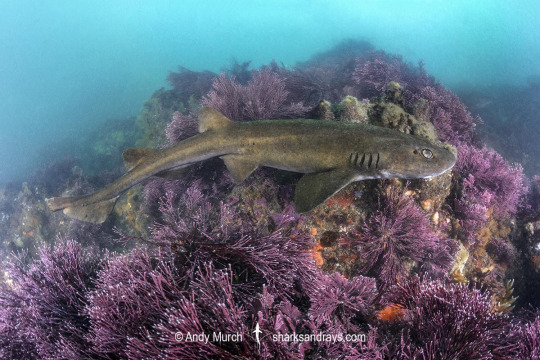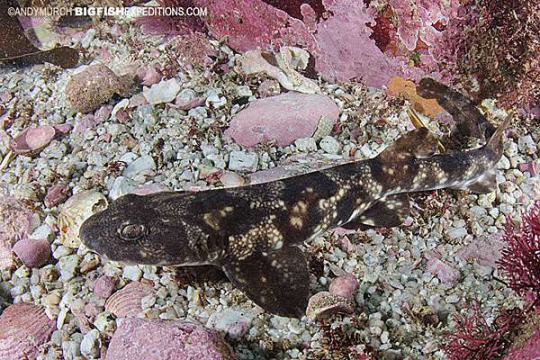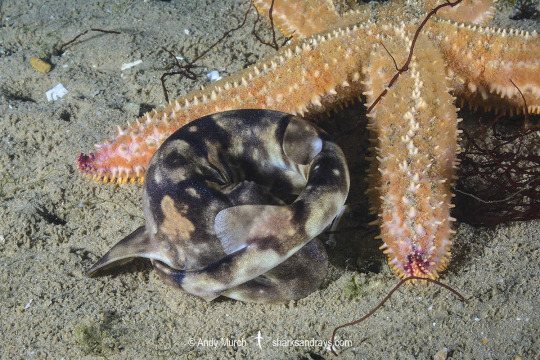#natal shyshark
Explore tagged Tumblr posts
Text




earth fact time. meet the shyshark, the largest species of catshark. when they get scared, they curl up with their tails over their eyes, which is why they're called shysharks!
pictures, in order: brown shyshark, natal shyshark, dark shyshark, puffadder shyshark
inaturalist nz | florida museum
photos: andy murch | andy murch | andy murch | doug perrine
#wish i could do this irl how convenient would that be#aquatic#earthposting#facts!#fishblr#biology#marine biology#marine life#sea life#marine animals#sea animals#sea creatures#zoology#sharks#shysharks#brown shyshark#natal shyshark#dark shyshark#puffadder shyshark#earth fact no. 9
13 notes
·
View notes
Photo





#endangeredinktober
6: New Forest Cicada
7: Golden Cheeked Warbler
8: Natal Shyshark
9: Sumatran Rhino
10: Lahontan Cutthroat Trout
Etsy
Instagram
#endangeredinktober#inktober#illustration#new forest cicada#golden cheeked warbler#natal shyshark#sumatran rhino#lahontan cutthroat trout#endangered#conservation#awareness
13 notes
·
View notes
Text

The saddles on a natal shyshark are darker than those of the puffadder.
106 notes
·
View notes
Link
According to the IUCN Red List, the following ten species of sharks are evaluated as Critically Endangered:
Pondicherry shark, Carcharhinus hemiodon Ganges shark, Glyphis gangeticus New Guinea River Shark, Glyphis garricki Irawaddy River Shark, Glyphis siamensis Natal Shyshark, Haploblepharus kistnasamyi Daggernose Shark, Isogomphodon oxyrhynchus Striped Smoothhound, Mustelus fasciatus Sawback Angelshark, Squatina aculeata Smoothback Angelshark, Squatina oculata+ Angelshark, Squatina squatina
And the following twenty species of sharks are evaluated as Endangered:
Borneo Shark, Carcharhinus borneensis Smoothtooth Blacktip Shark, Carcharhinus leiodon Harrisson’s Dogfish, Centrophorus harrissoni Winghead Shark, Eusphyra blochii Speartooth Shark, Glyphis glyphis Whitefin Topeshark, Hemitriakis leucoperiptera Honeycomb Izak, Holohalaelurus favus Whitespotted Izak, Holohalaelurus punctatus Broadfin Shark, Lamniopsis temminickii Narrownose Smoothhound, Mustelus schmitti Whale Shark, Rhincodon typus Scalloped Hammerhead Shark, Sphyrna lewini Great Hammerhead Shark, Sphyrna mokarran Argentine Angelshark, Squatina argentina Taiwan Angelshark, Squatina formoa Hidden Angelshark, Squatina guggenheim Smoothback Angelshark, Squatina occulta+ Angular Angelshark, Squatina punctata Zebra Shark, Stegosoma fasciatum Sharpfin Houndshark, Triakis acutipinna
This post does a great job summarizing what this means, why this is and how we can use the power of information to educate on protecting species!
#endangered#endangered species#Critically Endangered#iucn red list#marine biology#marine conservation#shark#sharks#shark conservation#conservation#ocean conservation
40 notes
·
View notes
Photo








SharkWeek has been going on the past week and I drew a critically endangered shark for every day of the week. Here you see: Northern River Shark/New Guinea River Shark Pondicherry Shark Angelshark Daggernose Shark Stripped Smooth-Hound Sawback Angelshark Natal Shyshark The greatest threats for all of these shark is the fishing industry, as they are catched for food and as bycatch. The second threat to them is global warming and their prey dying due to it. Loosing species of animals isn’t just a lost in diversity but also shows the serious consequences of our actions.
1 note
·
View note
Text
Top Five Shark Dives in South Africa
South Africa is a country of stark contrasts, from the dramatic setting of Cape Town on the Western Cape to the eastern border with Mozambique. The scenery underwater is just as dramatic here, where the Atlantic and Indian Oceans meet. The convergence feeds vast quantities of life and creates the perfect habitat for sharks. With over 50 species, South Africa is one of the world’s best spots to see these apex predators. Here are our picks for the top five shark dives in South Africa.
Bronze whaler shark
Port Elizabeth, East London and Port St. Johns are all great bases for the world-renowned Sardine Run, perennially listed as one of the top five wildlife spectacles on the planet. Hundreds of dolphins, thousands of diving gannets and penguins, as well as the occasional humpback or Bryde’s whale feast on the tiny sardines. But it’s the golden flash of the bronze whaler that is so impressive. These sharks can attain lengths of 10 feet (3 m) and will punch into the schools of fish, decimating the bait balls time after time. The sardines move fast, so snorkeling is often more realistic than diving since you can jump in quickly to get a look at the action.
Ragged-tooth, tigers, oceanic blacktips and dusky sharks
South of Durban lie the reefs of Protea Banks and Aliwal Shoal. Divers know these shark meccas best for the ragged-toothed (raggies), oceanic blacktips and tiger sharks that gather here in larger numbers than anywhere else in the world. Tiger sharks migrate to the warmer waters of the Eastern Cape during the South African winter and return to temperate waters in the summer. From January to June, divers can encounter these giants on both baited and natural dives.
Oceanic blacktips and dusky sharks have a fearsome reputation due to their curiosity and willingness to approach divers. Divers can see these extremely fast and muscular sharks throughout the year, with massive congregations of over 50 blacktips common on the reefs.
During the winter months, divers visiting Raggie Cave and Cathedral can see ragged-toothed sharks, also known as raggies or sand tigers. Although their jagged teeth, protruding from their mouths, make them appear fearsome, they’ve never been implicated in an attack on a human. These sharks are a biological marvel, producing 20,000 eggs in their lifetime. Diving with these 10 to 13-foot-long (3 to 4 m) lethargic swimmers is a privilege, and divers often find the teeth they’ve shed on the sandy bottom.
Whale shark
Divers can visit Sodwana Bay, on the northeast border of South Africa, year-round. During the summer, waters here reach 80 F (27 C) while during the winter water temperatures drop to 71 F (22 C). In the summer months when the plankton blooms reach KwaZulu-Natal and Sodwana, whale sharks reaching up to 40 feet long (13 m) frequent the shallow waters. Snorkelers can approach responsibly and divers might also spot them on scuba.
Broadnose sevengill shark
Further south, in the chilly waters (57 F/14 C) off the Western Cape, divers can find the broadnose sevengill shark gliding through the kelp forests of False Bay. Although they’re often solitary, they have been known to congregate in groups of up to 18 individuals.
False Bay is one of the few places in the world where divers have a high chance of encountering this rarely seen shark. They may also spot a variety of other small shark species, such as the shyshark, pyjama shark and the sharptooth houndshark, also called the spotted gully shark. A thick kelp forest lines the channel, creating this shark’s ideal habitat.
Blue and mako sharks
Blue Shark
Where the currents diverge, many nautical miles from the southern tip of Africa, divers can see two species of remarkable sharks. From October to July, when the waters are the warmest, blue sharks, with their cobalt bodies and slim features, and metallic gray mako sharks are the highlights of the trip. Diving to a maximum depth of 25 feet (8 m), divers might spot blue sharks, which congregate in numbers up to 40 at a time. Mako sharks lurk on the periphery, ever wary of the divers. Sleek yellow and longfin tuna, along with the chance to spot a mola mola round off this amazing experience.
The post Top Five Shark Dives in South Africa appeared first on Scuba Diver Life.
from Scuba Diver Life http://ift.tt/2eOul60
0 notes
Text
Top Five Shark Dives in South Africa
South Africa is a country of stark contrasts, from the dramatic setting of Cape Town on the Western Cape to the eastern border with Mozambique. The scenery underwater is just as dramatic here, where the Atlantic and Indian Oceans meet. The convergence feeds vast quantities of life and creates the perfect habitat for sharks. With over 50 species, South Africa is one of the world’s best spots to see these apex predators. Here are our picks for the top five shark dives in South Africa.
Bronze whaler shark
Port Elizabeth, East London and Port St. Johns are all great bases for the world-renowned Sardine Run, perennially listed as one of the top five wildlife spectacles on the planet. Hundreds of dolphins, thousands of diving gannets and penguins, as well as the occasional humpback or Bryde’s whale feast on the tiny sardines. But it’s the golden flash of the bronze whaler that is so impressive. These sharks can attain lengths of 10 feet (3 m) and will punch into the schools of fish, decimating the bait balls time after time. The sardines move fast, so snorkeling is often more realistic than diving since you can jump in quickly to get a look at the action.
Ragged-tooth, tigers, oceanic blacktips and dusky sharks
South of Durban lie the reefs of Protea Banks and Aliwal Shoal. Divers know these shark meccas best for the ragged-toothed (raggies), oceanic blacktips and tiger sharks that gather here in larger numbers than anywhere else in the world. Tiger sharks migrate to the warmer waters of the Eastern Cape during the South African winter and return to temperate waters in the summer. From January to June, divers can encounter these giants on both baited and natural dives.
Oceanic blacktips and dusky sharks have a fearsome reputation due to their curiosity and willingness to approach divers. Divers can see these extremely fast and muscular sharks throughout the year, with massive congregations of over 50 blacktips common on the reefs.
During the winter months, divers visiting Raggie Cave and Cathedral can see ragged-toothed sharks, also known as raggies or sand tigers. Although their jagged teeth, protruding from their mouths, make them appear fearsome, they’ve never been implicated in an attack on a human. These sharks are a biological marvel, producing 20,000 eggs in their lifetime. Diving with these 10 to 13-foot-long (3 to 4 m) lethargic swimmers is a privilege, and divers often find the teeth they’ve shed on the sandy bottom.
Whale shark
Divers can visit Sodwana Bay, on the northeast border of South Africa, year-round. During the summer, waters here reach 80 F (27 C) while during the winter water temperatures drop to 71 F (22 C). In the summer months when the plankton blooms reach KwaZulu-Natal and Sodwana, whale sharks reaching up to 40 feet long (13 m) frequent the shallow waters. Snorkelers can approach responsibly and divers might also spot them on scuba.
Broadnose sevengill shark
Further south, in the chilly waters (57 F/14 C) off the Western Cape, divers can find the broadnose sevengill shark gliding through the kelp forests of False Bay. Although they’re often solitary, they have been known to congregate in groups of up to 18 individuals.
False Bay is one of the few places in the world where divers have a high chance of encountering this rarely seen shark. They may also spot a variety of other small shark species, such as the shyshark, pyjama shark and the sharptooth houndshark, also called the spotted gully shark. A thick kelp forest lines the channel, creating this shark’s ideal habitat.
Blue and mako sharks
Blue Shark
Where the currents diverge, many nautical miles from the southern tip of Africa, divers can see two species of remarkable sharks. From October to July, when the waters are the warmest, blue sharks, with their cobalt bodies and slim features, and metallic gray mako sharks are the highlights of the trip. Diving to a maximum depth of 25 feet (8 m), divers might spot blue sharks, which congregate in numbers up to 40 at a time. Mako sharks lurk on the periphery, ever wary of the divers. Sleek yellow and longfin tuna, along with the chance to spot a mola mola round off this amazing experience.
The post Top Five Shark Dives in South Africa appeared first on Scuba Diver Life.
from Scuba Diver Life http://ift.tt/2eOul60
0 notes
Text

Terms like “shyshark” and “donut” that emerged in response to shysharks’ defensive behavior can be applied to multiple species. To keep this from confounding research, academics use “Happy Eddie” as an easy-to-remember name for puffadder shysharks, based on the scientific name Haploblepharus edwardsii. "Plain Happy,” “pretty Happy,” and “Happy chappie” refer to brown, dark, and natal shysharks respectively.
243 notes
·
View notes
Text

Natal shysharks are endemic to a small area off South Africa from the Western Cape to KwaZulu-Natal.
125 notes
·
View notes
Text

Natal shysharks were thought to be another form of puffadder shyshark, that differed in appearance and habitat preference; however in 2006 they were officially classified as a separate species.
92 notes
·
View notes